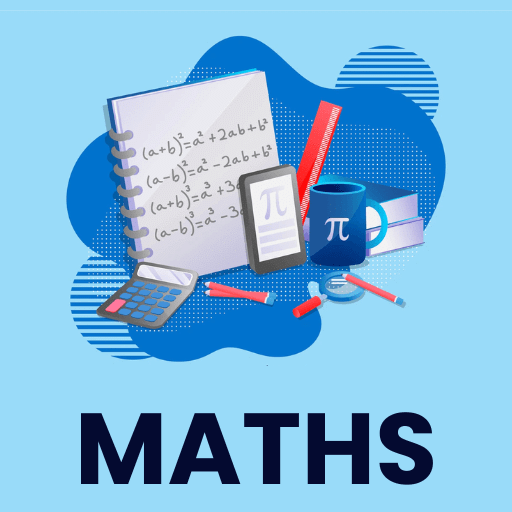Best Study Material for Electrical Engineering (EE) Exam
DC Machines - 4 | Electrical Machines for Electrical Engg. - Electrical Engineering (EE) PDF Download
Compound Generator
- Cumulatively compounded generators are more common because these can furnish almost constant voltage from no load to full load.
No Load Characteristic
- Same current flows through the series field and shunt field turns in case of a long-shunt compound generator.
- Since the number of series field turns is far less than that of the shunt field turns, the effect of series field mmf may be neglected in comparison with the shunt field mmf at no load.
- For a short-shunt compound generator, series field carries no current when obtaining its no load characteristic. Thus the no load characteristic of a longshunt or shot shunt compound generator is the same as if it were a shunt generator.
External Characteristic
- The external characteristics of a compound generator are shown in figure below :
- In a cumulatively compounded generator, with the increase of load current, the series field flux aids the shunt field flux.
- Depending upon the number of series field turns, the cumulatively compounded generator may be undercompounded (terminal voltage falls with increase of load), level or flat-compounded (terminal voltage remains practically constant with increase in load) or over-compounded (terminal voltage rises with increase in load).
- In a differentially compounded generator, with the increase in load, the series-field flux opposes the shuntfield flux and consequently the terminal voltage falls more rapidly.
- Differentially compounded generators are not damaged by short circuit. In view of this, these generators my be used for welding purposes.
- The degree of compounding can be controlled by connecting a suitable low resistance called diverter, in parallel with the series field winding.
Observations :
- For series generator, curve 1, the terminal voltage rises rapidly with load current. At overloads, terminal voltage beings to decrease owing to saturation, armature reaction etc.
- For cumulative over-compounded generator, curve 2, no-load voltage is less than Vtr.
- For level, or flat compounded generator, curve 3, the no-load voltage and full-load voltages are equal. However, terminal voltage at light load is more than Vtr but at overloads it falls below Vtr.
- For cumulative under-compounded generator, curve 4, no-load voltage is more than Vtr.
- For both separately-excited (curve 5) and shunt (curve 6) generators, Vtr is less than no-load voltage. Voltage variation from no-load to full load is less in separately-excited generator than in a shunt generator.
- For differential compounded generator, no load voltage is much higher than Vtr.
OPERATING CHARACTERISTICS
DC Motors
- The following are the three important operating characteristics of dc motors.
- Speed-armature current characteristic
- Torque-armature current characteristic and
- Speed-torque characteristic.
DC Shunt Motor
- For constant supply voltage, the field current is constant. At small values of armature current the demagnetizing effect of armature current the demagnetizing effect of armature reaction is almost negligible and therefore the air gap flux is unaffected.For larger value of armature (or load) currents, the demagnetizing effect of armature reaction, decreases the air gap flux slightly.
Speed-Current Characteristic
- For constant supply voltage V1 and constant field current If, the motor speed is affected by Ia ra drop and demagnetizing effect of armature reaction. With the increase of Ia, the demagnetizing effect of armature reaction increases which reduces the field flux – therefore the motor speed tends to increase.
- The speed of dc shunt motor with increase of Ia drops only slightly from its no-load speed ωmo. Since Ia at no-load is negligibly small, the shunt motor no-load speed wmo is given by
Torque-Current Characteristic
- Te = KaØ La
- The torque would increase linearly with armature current Ia. However, for larger Ia, the flux decreases due to the demagnetizing effect of armature reaction.
Speed-Torque Characteristic
- Also called the mechanical characteristic.
- For larger Te, larger Ia is required and this has the effect of reducing the air gap flux f, due to saturation and armature reaction.
- With increase of Te, Ø is reduced, Te/Ø2 increases at a faster ate and the speed drops more rapidly with the increase of torque.
- If effect of AR is neglected, then (Ka Ø )2 in equation remains constant. As a result, the speed drop with Te is slow.
DC Series Motor
Speed-Current Characteristic
- If saturation and armature reaction are neglected, the main flux f is directly proportional to armature current Ia.
or
or
- The speed-current characteristic of a series motor is a hyperbola.
- Including saturation and armature reaction.
- At increased values of Ia, the flux Ø should increase with Ia, but due to the demagnetizing effect of armature reaction and saturation, the air gap flux Ø tends to remain approximately constant.
- At no load, the armature current is very small, because the power input to motor has to overcome the no load losses only.
- The no load speed of the series motor becomes dangerously high due to small no load current. In view of this, the series motor must always start and operate under load mechanically coupled with it.
Torque-Current Characteristic
- With saturation and armature reaction neglected,
- The torque is proportional to the square of Ia and, therefore, torque-current characteristic is a parabola. But for larger Ia, the net flux tends to remain approximately constant.
- Consequently the torque-current characteristic approaches a straight line for larger values of Ia.
Speed-Torque Characteristic
- If saturation and armature reaction are neglected
- With negligible saturation and armature reaction, the speed-torque characteristic is a hyperbola.
- With saturation and armature reaction included, large torques require large currents and these large currents tend to make air gap flux f constant. This has the effect of making Te approximately proportional to Ia (i.e. Te = KaIa).
- For a series motor, the speed drop at increased load torques is almost negligible.
DC Cumulative Compound Motor
- A differential compound motor is rarely used.
- The performance characteristics of cumulative compound motor are mainly described.
Speed-Current Characteristic
- For a long-shunt compound motor
Vt = Ea + Ia (ra + rs) and
Where
Øsh and Øse are respectively the fluxes created by shunt and series field windings
- With increase in la, the speed drops at a faster rate in cumulative compound motor than in a shunt motor.
- Here no-load speed is assumed to be the same. For comparison purposes.
Speed-Torque Characteristic
- With increase in motor torque Te, armature current rises, with this series-field flux Øse rises.
- The speed-torque characteristic in a cumulative compound motor is more dropping than in a dc shunt motor.
STARTING OF D.C. MOTORS
- The primary function of a starter circuit is during the starting and accelerating time of the motor.
- Due to heavy inrush of starting current taken by the motor may result in.
- Detrimental sparking at the commutation.
- Damage to the armature winding and deterioration of the insulation due to over heating.
- High starting torque and quick accelerationwhich may damage the rotating parts ot the motor and the load.
- Large dips in the supply voltage.
- In order to limit starting current starters are necessary for suitable operation of d.c. machines.
- To limit the starting current, an external resistance should be inserted into armature circuit, which is removed gradually as motor fixe-up the speed. On the basis of these ideas, two type of starters are used. Three Point Starter
- A three point starter with its electrical connection and protective features is shown below.
- Here three terminals (L, A, F) are available from the starter therefore it is called a three-point starter. where L(line), A(Armature) and field (F) must be connected to supply terminal, motor armature terminal and shunt field terminal respectively.
Operation
- When the motor is at rest starter handle H is kept in the off position by strong spiral spring.
- For starting the motor, the handle is rotated to connected with stud 1, as soon as handl H touches stud 1, the shunt field and holding coil HC get connected in series across the supply, whereas the armature gets connected in series with the entire starting resistance.
- Since the current begins to flow in both the field and armature windings, the motor starts rotating.
- After the armature has picked up sufficient speed, the handle H is moved to stud 2, thereby cutting out the resistance between stud 1 to stud 2.
Disadvantage
- Three-point starter can not be used where wide range of speed control by shunt field control (or field weakening method) is required.
- In case of a three-point starter, the field circuit and the hold coil are in series. If speeds above the normal are to be obtained, the field current must be reduced. At a certain value of reduced field current (therefore, increased motor speed), the electromagnetic pull of the holding coil may become less than the spring force. In such a case, the starter handle returns to the OFF position and the motor stops. Thus a three-point starter can not be used where wide range of speed control by shunt field control (or field weakening method) is required. This undesirable feature can be overcome in four-points starters.
- Here two important magnetic coils are used :
- Holding magnet coil or HC which is connected with field winding. The coil HC is also called no-voltage release or low voltage release is acting as protective device.
- Protective device OR, known as the overload release is provided in series with the armature circuit.
- The disadvantage of three-point starter can be overcome in four-point starter.
Four Point Starter
- Four terminals (L, L, F, A) are available in this starter. Everything is same as three point starter only one extra line terminal with extra resister R is connected with point a of the HC coil.
- The function of resistance R is to prevent short circuit of the supply mains, in the case the overload release OR operates. When HC gets short circulated by OR, the current through R is limited by its own resistance and the starting resistance.
- Now it permits wide speed control by field rheostats inserted in field current.
Note:
- Both are starters used in d.c. shunt or d.c. compound motor.
- Starters of series motor are also two type :
- no-volt release type of starter.
- no-load release type of starter.
The document DC Machines - 4 | Electrical Machines for Electrical Engg. - Electrical Engineering (EE) is a part of the Electrical Engineering (EE) Course Electrical Machines for Electrical Engg..
All you need of Electrical Engineering (EE) at this link: Electrical Engineering (EE)
|
35 videos|85 docs|42 tests
|
FAQs on DC Machines - 4 - Electrical Machines for Electrical Engg. - Electrical Engineering (EE)
| 1. What is a DC machine in electrical engineering? |  |
| 2. What are the different types of DC machines? |  |
Ans. There are two main types of DC machines - DC motors and DC generators. DC motors convert electrical energy into mechanical energy, while DC generators convert mechanical energy into electrical energy. Both types can be further classified into various subtypes based on their construction and working principles.
| 3. How does a DC machine work as a motor? |  |
Ans. A DC machine works as a motor by utilizing the principle of electromagnetic induction. When a current-carrying conductor is placed in a magnetic field, a force is exerted on it due to the interaction between the magnetic field and the current. This force causes the conductor to move, resulting in the rotation of the rotor, which is connected to the load.
| 4. What are the applications of DC machines? |  |
Ans. DC machines find various applications in different industries. DC motors are commonly used in electric vehicles, industrial machinery, robotics, and household appliances. DC generators are used in power plants, backup power systems, and renewable energy sources like wind turbines.
| 5. What are the advantages of DC machines over AC machines? |  |
Ans. DC machines have certain advantages over AC machines in specific applications. Some advantages include better speed control, higher starting torque, simpler control circuits, and the ability to operate at low speeds without loss of efficiency. However, AC machines are generally more efficient and cost-effective for large-scale power generation and distribution systems.
Related Searches




















